LONGUEUIL'S
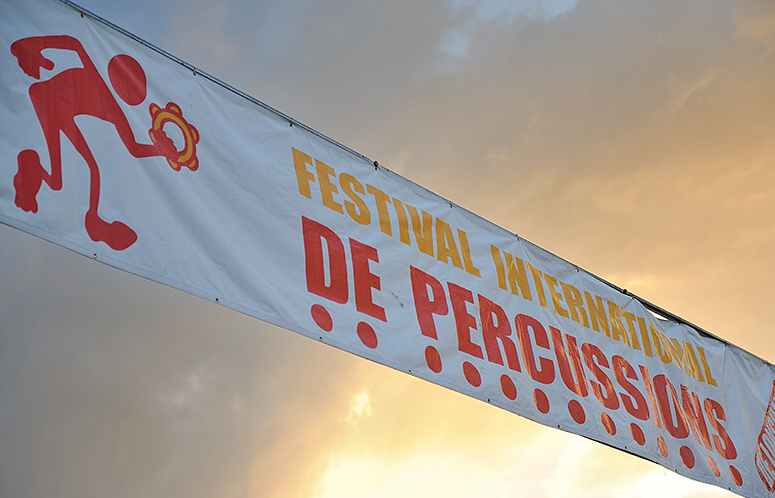
2010 INTERNATIONAL PERCUSSION FESTIVAL
In
what has become one of the most anticipated ‘entirely
free’ summer events in all of Quebec, the 9th edition
of the Longueuil
International Percussion Festival, under mostly
sunny skies and balmy temperatures, drew more than 125,000 visitors
between between July 15-18. For four days, from noon until the
bewitching hour, there were approximately 25 free concerts on
the three main stages, one of which was dedicated to the discovery
of new talent.
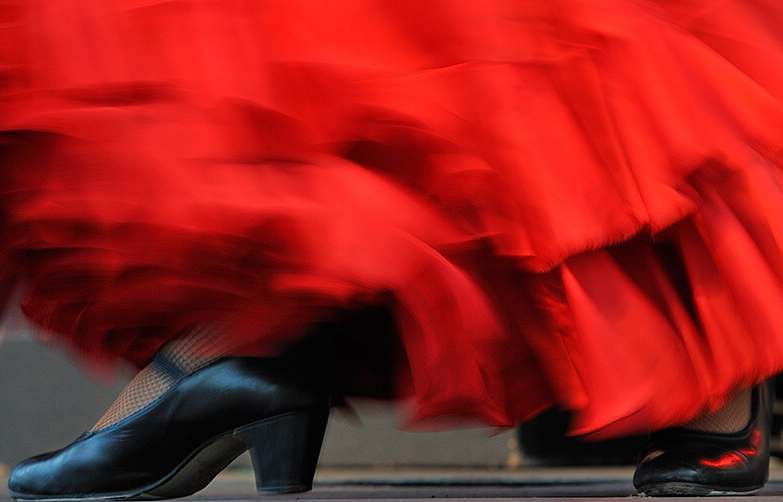 This
year’s festival featured the music and dance (and scrumptious
paella) of Spain, with a major emphasis on the art of flamenco.
This
year’s festival featured the music and dance (and scrumptious
paella) of Spain, with a major emphasis on the art of flamenco.
The
link between Spain and the New World (New France) goes back
to the early sixteenth century with the discovery of the fishing
windfall off the Grand Banks of Newfoundland. It is a little
known but significant fact that when Jacques Cartier arrived
in eastern Canada, he was addressed in the Basque language of
northern Spain. In fact surveys have uncovered Spanish coins
and remains of Basque habitations and burial grounds which predate
Cartier’s historic visit. So there are all sorts of good
reasons to exhibit and celebrate Spanish culture.
The
southern (and drop dead gorgeous) region of Andalusia is regarded
as the birthplace of flamenco, with a respectful nod to the
plaintive minor chord interval we associate with Arabic music.
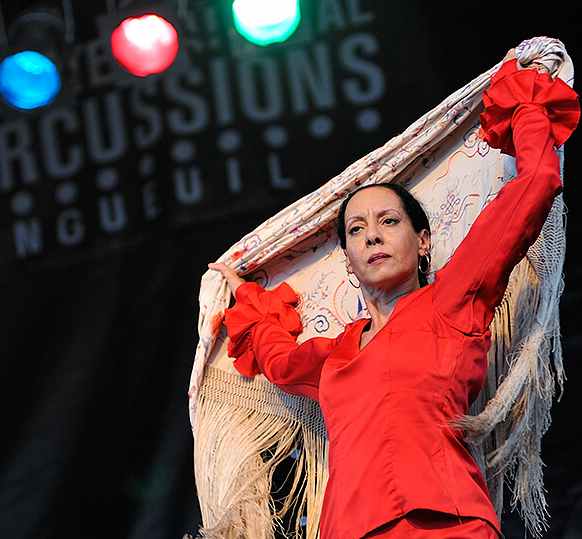
But
it is especially the inimitable dance that defines flamenco,
and with this in mind, music programmer and festival organizer
France Cadieux invited several groups from Spain to expose a
complicated art form that enjoys universal acclaim.
The
opening night belonged to the Ballet
Flamenco
Arte de España. The group consisted of
a highly skilled guitarist-singer, a percussionist and four
gifted female dancers, each of whom, in the solo tradition,
was called upon to improvise and dialogue with both voice and
guitar. What immediately struck both the eye and ear was the
incredible foot work that goes into flamenco; there is nothing
quite like it in the long history of dance. When it comes to
baring the  Spanish
psyche and soul, flamenco -- in its brutal honesty and declamation
-- is without equal. From one spellbinding impromptu after another,
there was no mistaking the incredibly proud posture and carriage
of the dancer, her heel and toe work ringing off the miked floor
like an electric staple gun, symbolically stamping down, pulverizing
someone apparently fallen out of the Senorita's good graces.
With the dancer’s brow furled and eyes seeing red, it’s
as if she were avenging every man who has betrayed her and every
Spanish male who has betrayed his country’s hopes and
aspirations.
Spanish
psyche and soul, flamenco -- in its brutal honesty and declamation
-- is without equal. From one spellbinding impromptu after another,
there was no mistaking the incredibly proud posture and carriage
of the dancer, her heel and toe work ringing off the miked floor
like an electric staple gun, symbolically stamping down, pulverizing
someone apparently fallen out of the Senorita's good graces.
With the dancer’s brow furled and eyes seeing red, it’s
as if she were avenging every man who has betrayed her and every
Spanish male who has betrayed his country’s hopes and
aspirations.
The
following evening, in another grouping featuring Roxanne Dion
and guitarist-singer José Galvez, the celebrated lead
dancer, José
Maya, through his fierce, but totally enthralling
footmanship, gave new insight and meaning to the word macho.
As his fearsome feet ripped off the floor like a box of exploding
fire crackers, we were made privy to the pride and conceit that
operates through the Spanish male psyche -- in especially the
pueblos and áreas rurales in the South.
Which isn’t to say that flamenco doesn’t offer playful
moments, such as the mix of music and circus provided by the
highly entertaining group Albadulake.
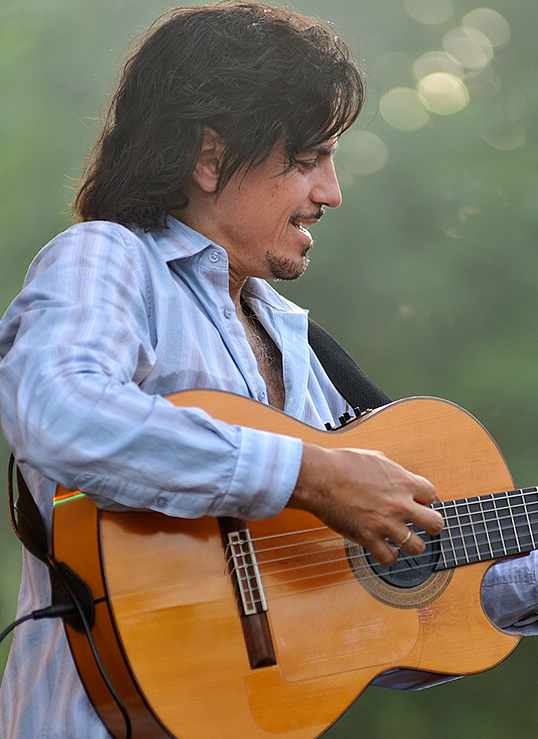 And
lest we forget, as it concerns the incredible achievement of
flamenco, we are always in the presence of breathtaking, technically
unparalleled guitar wizardry, and the plaintive, heartbreaking
singing that reveals yet another side of Spain. It has been
said that of the many styles and genres of music that originate
with the guitar, none compares to flamenco in bringing out the
richness and dynamic potential of the instrument. And it’s
all acoustically produced -- electrification (distinct from
amplification) verboten. But. You’ll require
four totally engaged, acrobatic fingers, a nimble thumb and
a decade’s worth of intense study. Think of Manitas de
Plata, Sabicus, Paco de Lucia, to mention three flamenco guitar
immortals. At the end of the four days, I think we all felt
wiser and considerably closer and sympathetic to the essence
and diversity of Spain.
And
lest we forget, as it concerns the incredible achievement of
flamenco, we are always in the presence of breathtaking, technically
unparalleled guitar wizardry, and the plaintive, heartbreaking
singing that reveals yet another side of Spain. It has been
said that of the many styles and genres of music that originate
with the guitar, none compares to flamenco in bringing out the
richness and dynamic potential of the instrument. And it’s
all acoustically produced -- electrification (distinct from
amplification) verboten. But. You’ll require
four totally engaged, acrobatic fingers, a nimble thumb and
a decade’s worth of intense study. Think of Manitas de
Plata, Sabicus, Paco de Lucia, to mention three flamenco guitar
immortals. At the end of the four days, I think we all felt
wiser and considerably closer and sympathetic to the essence
and diversity of Spain.
But
it wasn't all flamenco. This extremely complex dance idiom was
transformed into modern tango, samba and salsa etc. by the incredible
Longueuil-based Bahia
Studio dance troupe that left us speechless
with performances worthy of Hollywood and prime time TV.
Bahia
Studio dance troupe that left us speechless
with performances worthy of Hollywood and prime time TV.
Beyond
the music, which runs all day long, what stands out in Longueuil's
summer festival is its completeness. Everything you want or
expect of a festival is there. If it’s the visual arts
that entice, there are art and sculpture classes, as well as
an extensive gallery section with local artists contributing
their latest works; and in the spirit of The
Prado (Madrid’s famous museum), along the
huge closed off pedestrian area, there was a series of 12-feet-tall
murals representing Spain’s most illustrious painters:
Goya, Picasso and Dali.
With
a major emphasis on participation, the festival offers instruction
in percussion and dance (samba, tango), a spectacular citizen’s
carnival parade, as well as numerous scheduled activities for
the kids, including rides and games. The site itself features
the beautiful, tree laden Park St. Mark which hosts a vibrant
international market place. Running along side the various activities
are the many restaurants along St. Charles Street, most of which
face the major music stages. Century old trees provide shade
and a country feel, and of course there is the local French
architecture. And last but not least is the friendliness of
the locals, and the distinctly international feel the event
generates: you not only hear French and English spoken, but
Spanish, any number of African languages, and Creole, Chinese
and Japanese. It’s a festival that simply brings out the
best in people, and for that reason alone, it ranks with the
best.
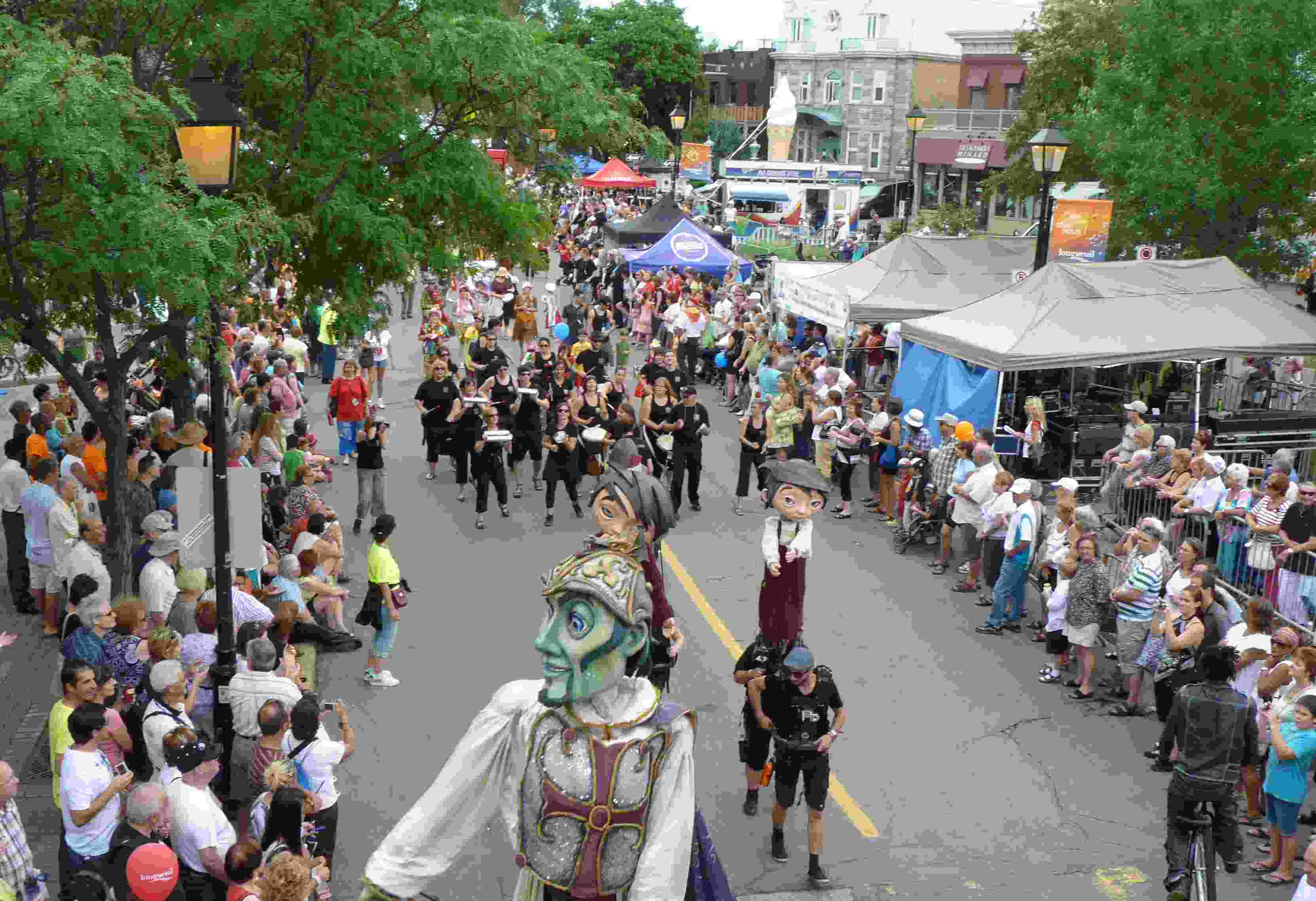 At
the conclusion of this year’s superb offering of festivities
and culture, I was left with one haunting image. On day three,
just before the main show was to begin, the rains came down,
and they were Biblical in proportion. While we (press, musicians,
organizers) were enjoying the dry provided by a huge tent, in
the eye of the downpour was the lonely and thoroughly irrigated
figure of festival organizer-programmer France
Cadieux,
who, one at a time, was turning over the chairs in a vain attempt
to keep them dry. Where actions speak louder than words, it
was plainly evident to anyone with eyes that Longueuil's International
Percussion Festival is in the loving, caring hands of a mother
figure for whom this event is the perfect occasion to demonstrate
that "yes we can" is more than just a slogan, which
promises that next year’s 10th anniversary celebration
will be one for the ages.
At
the conclusion of this year’s superb offering of festivities
and culture, I was left with one haunting image. On day three,
just before the main show was to begin, the rains came down,
and they were Biblical in proportion. While we (press, musicians,
organizers) were enjoying the dry provided by a huge tent, in
the eye of the downpour was the lonely and thoroughly irrigated
figure of festival organizer-programmer France
Cadieux,
who, one at a time, was turning over the chairs in a vain attempt
to keep them dry. Where actions speak louder than words, it
was plainly evident to anyone with eyes that Longueuil's International
Percussion Festival is in the loving, caring hands of a mother
figure for whom this event is the perfect occasion to demonstrate
that "yes we can" is more than just a slogan, which
promises that next year’s 10th anniversary celebration
will be one for the ages.
Hasta
el próximo año.
_______________________________
If
you have already decided that Old Longueuil is where you want
to spend more time, don’t forget the FREE summer concerts
that take place every Thursday, Friday and Saturday in
St. Mark Park.
2011
June 23, Fête Nationale (St-Jean-Baptiste Day) =
Antoine
Gratton & Damien Robitaille (FREE outdoor
concert St. Charles Street, City Hall)
 And
don't forget the FREE 2011 outdoor July7th, 7.30 pm concert
featuring tenor Marc Hervieux and Martine St-Clair and the celebrated
Longueuil Symphony
Orchestra
in Boucherville (Parc de la Riviere-aux-Pins,
551 Chemin du Lac).
And
don't forget the FREE 2011 outdoor July7th, 7.30 pm concert
featuring tenor Marc Hervieux and Martine St-Clair and the celebrated
Longueuil Symphony
Orchestra
in Boucherville (Parc de la Riviere-aux-Pins,
551 Chemin du Lac).
Report
filed by Robert J. Lewis
Photo Credits: © Denis Beaumont (photos
= 1,2,3,5,6)